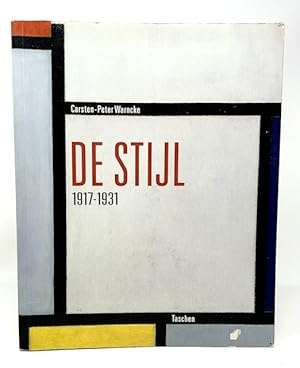
The Ideal as Art: De Stijl ('The Style') 1917-1931 (Taschen)
Check my rate
| Main centres: | 1-3 business days |
| Regional areas: | 3-4 business days |
| Remote areas: | 3-5 business days |

| Main centres: | 1-3 business days |
| Regional areas: | 3-4 business days |
| Remote areas: | 3-5 business days |
Published by Taschen, 1994, softcover, illustrated, 216 pages, 24.6 cms x 30.3 cms, apart from inscription, condition: very good.
De Stijl ( 'The Style') was a Dutch art movement founded in 1917 by a group of artists and architects based in Leiden (Theo van Doesburg, J.J.P. Oud), Voorburg (Vilmos Huszár, Jan Wils) and Laren (Piet Mondrian, Bart van der Leck). De Stijl was also the name of a journal published by the Dutch painter, designer, writer, poet and critic Theo van Doesburg that propagated the group's theories. Along with van Doesburg, the group's principal members were the painters Piet Mondrian, Vilmos Huszár, Bart van der Leck, the architects J.J.P. Oud, Jan Wils, Gerrit Rietveld, Robert van 't Hoff, the sculptor and painter Georges Vantongerloo, and the poet and writer Antony Kok.
The art theory that formed the basis for the group's work was originally known as Nieuwe Beelding in Dutch; it was later translated to Neoplasticism in English. This theory was subsequently extended to encompass the principles of Elementarism.
The De Stijl influence on architecture remained considerable long after its inception; Mies van der Rohe was among the most important proponents of its ideas. Between 1923 and 1924, Rietveld designed the Rietveld Schröder House, the only building to have been created completely according to De Stijl principles. Examples of Stijl-influenced works by J.J.P. Oud can be found in Rotterdam (the Café De Unie) and Hook of Holland (Arbeiderswoningen). Other examples include the Eames House by Charles and Ray Eames, and the interior decoration for the Aubette dance hall in Strasbourg, designed by Sophie Taeuber-Arp, Jean Arp and van Doesburg.